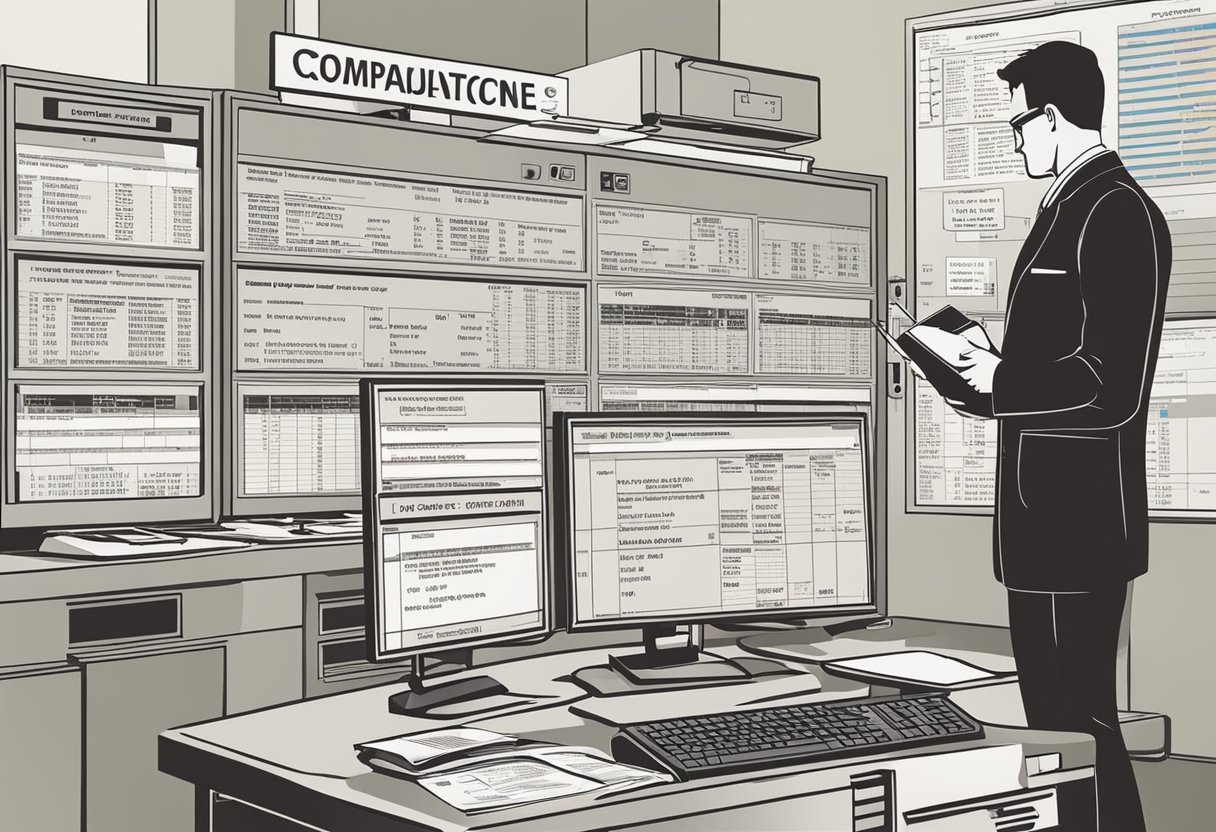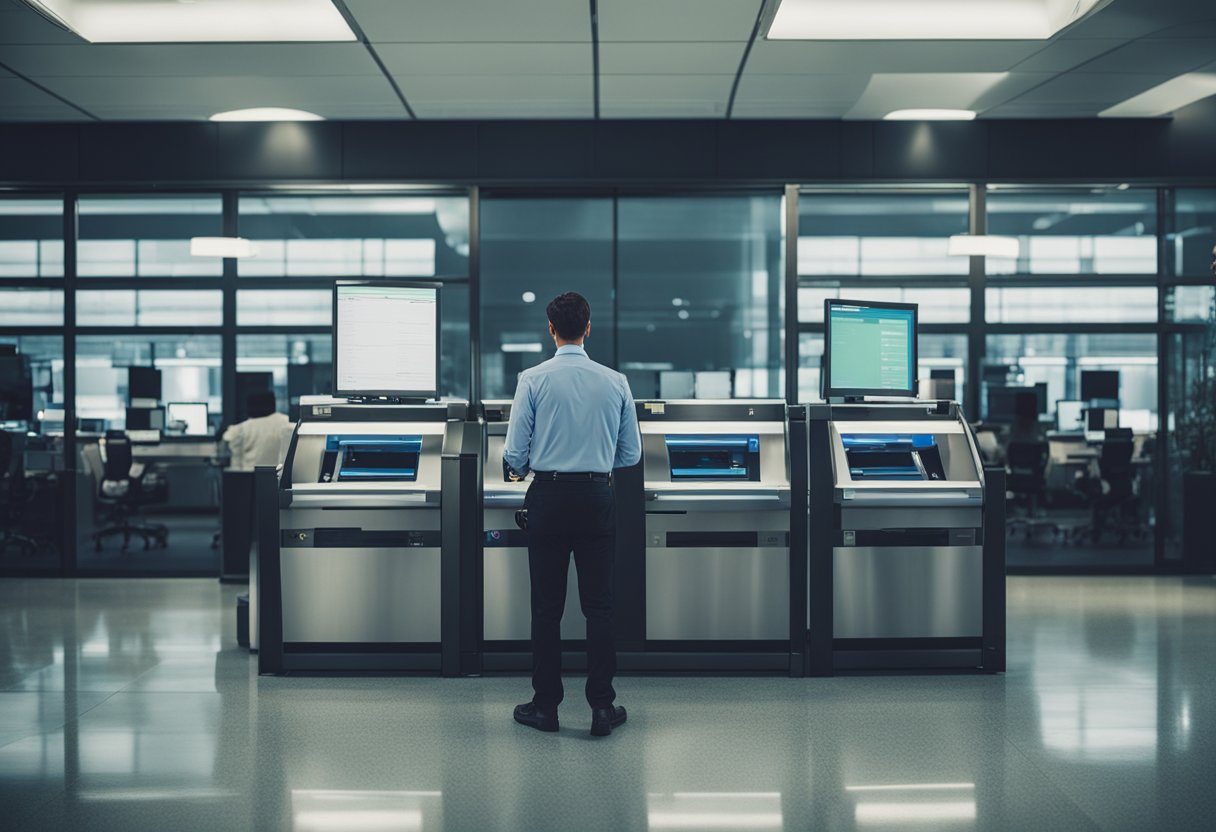Automated Compliance Checks in Post-Trade Environments: Streamlining Regulatory Compliance
Streamline regulatory compliance with automated compliance checks in post-trade environments. Our expert insights provide practical tips to improve efficiency.

In finance, compliance is crucial to ensuring businesses operate within the legal framework and adhere to regulatory requirements. The post-trade environment is critical as it involves settling securities transactions after they have been executed. Compliance checks are essential to ensure all parties follow the rules and regulations. Automated compliance checks have become increasingly popular in recent years, as they offer numerous benefits over manual processes.
Understanding Automated Compliance Checks
Automated compliance checks involve technology monitoring and analysing data in real-time. This technology can identify potential compliance issues and flag them for further investigation. Automated processes can also help to reduce the risk of errors and ensure that compliance checks are conducted consistently. Automation in compliance checks can help businesses save time, reduce costs, and ensure they operate within the legal framework.
The Role of Technology in Compliance
Technology plays a critical role in compliance by providing businesses with the tools to monitor and analyze data. Automated compliance checks are just one example of how technology can be used to improve compliance processes. Other technologies, such as machine learning and artificial intelligence, can also identify potential compliance issues and provide insights into how to address them. The use of technology in compliance is essential to ensure that businesses can keep up with the ever-changing regulatory landscape.
Key Takeaways
- Automated compliance checks use technology to monitor and analyze data in real time, reducing the risk of errors and ensuring that compliance checks are conducted consistently.
- Technology plays a critical role in compliance by providing businesses with the tools to monitor and analyze data, identify potential compliance issues, and provide insights into how to address them.
- Automation in compliance can help businesses save time, reduce costs, and ensure that they operate within the legal framework.
Understanding Automated Compliance Checks
Automated compliance checks use technology to streamline and execute compliance procedures effectively. The main goal of automatic compliance checks is implementing innovative technologies to accomplish compliance operations with minimal human interference. Compliance permeates all activities in the design, construction, and use of a built environment to ensure it is fit for purpose, constructed by the design brief, functional and cost-effective to run, safe to use, and sustainable to the environment throughout its service life.
Automated compliance checks are an effective and widely applied strategy in Industry 4.0. Automatic compliance checking (ACC) is "the automated process of regulatory compliance checking." Automatic compliance checks can help organizations embed compliance testing into their processes and continuously check for issues. This can help accelerate changes, reduce time to market, and safeguard against costly compliance breaches.
Automated compliance checks are particularly relevant in post-trade environments. Post-trade compliance refers to the set of regulations that govern the activities after a trade has been executed. Post-trade compliance is a critical aspect of financial markets, as it helps ensure that trades are conducted fairly and transparently. Automated compliance checks can help firms comply with post-trade regulations by automating the process of regulatory compliance checking.
Automated compliance checks can be achieved using various technologies, such as artificial intelligence, machine learning, and natural language processing. These technologies can automate compliance checks in multiple ways, such as by analyzing trade data, monitoring transactions, and identifying potential compliance issues.
In conclusion, automated compliance checks are essential for firms operating in post-trade environments. By automating compliance checks, firms can ensure they comply with post-trade regulations and avoid costly compliance breaches. Automated compliance checks can be achieved through various technologies, and firms should explore these technologies to streamline their compliance operations and improve their overall compliance posture.
The Role of Technology in Compliance

Technology has played a significant role in the evolution of compliance checks in post-trade environments. With the advent of digital transformation, compliance checks have become more automated, efficient, and accurate. Compliance checks are essential in ensuring financial institutions comply with regulatory requirements, and technology has made it easier to perform them.
Software and cloud-based solutions have made it possible to automate compliance checks and reduce the risk of errors. These solutions can analyze large amounts of data and identify anomalies that require further investigation. Compliance officers can then focus their efforts on these anomalies rather than spending time manually reviewing large amounts of data.
Cloud-based solutions have also made implementing compliance checks across multiple locations and departments easier. Compliance officers can access data from anywhere, and the system can automatically flag any violations. This ensures that compliance checks are consistent across the organization and reduces non-compliance risk.
Digital transformation has also enabled using artificial intelligence (AI) and machine learning (ML) in compliance checks. These technologies can analyze data and identify patterns indicating fraudulent activity or non-compliance. AI and ML can also learn from past data to improve the accuracy of future compliance checks.
Technology has enabled financial institutions to automate compliance checks, reduce errors, and improve accuracy. Compliance officers can perform their duties more efficiently with software, cloud-based solutions, AI, and ML, and organizations can reduce the risk of non-compliance.
Regulatory Landscape and Compliance

The regulatory landscape has become increasingly complex in recent years, with the Securities and Exchange Commission (SEC) and other regulatory bodies introducing new regulations and regulatory changes. These regulatory changes have had a significant impact on post-trade environments, making it more difficult for companies to ensure compliance with regulatory requirements.
To address these challenges, many companies have turned to automated compliance checks. Automatic compliance checks allow companies to quickly and efficiently identify potential compliance issues, reducing the risk of regulatory violations. By automating compliance checks, companies can reduce the time and resources required to ensure compliance, freeing up resources for other critical business functions.
One of the key benefits of automated compliance checks is their ability to keep up with changing regulatory requirements. As regulations change, automatic compliance checks can be updated to ensure that they continue to meet regulatory requirements. This helps companies to stay ahead of regulatory changes and avoid compliance issues.
Overall, the regulatory landscape and compliance requirements in post-trade environments continue to evolve. Companies that can stay ahead of these changes and implement effective compliance measures will be better positioned to succeed in the long term. Automated compliance checks are valuable for companies looking to ensure compliance and reduce the risk of regulatory violations.
Post-Trade Environment and Compliance

In the post-trade process, compliance checks are essential to ensure that all trades adhere to regulatory requirements. Compliance checks are performed after the trade has been executed and before settlement. These checks identify potential issues and ensure that all trades comply with regulatory requirements.
Automated compliance checks have become increasingly common in post-trade environments. These checks use algorithms and artificial intelligence to analyze trades and identify potential compliance issues. Automatic compliance checks can be performed more quickly and accurately than manual checks, reducing the risk of errors and ensuring that all trades comply with regulatory requirements.
Post-trade compliance is an essential part of the trading process. It ensures that all trades are executed in compliance with regulatory requirements and that all parties involved are protected. Compliance checks are performed at various stages of the post-trade process, including trade confirmation, matching, and settlement.
In addition to regulatory compliance, post-trade checks are performed to ensure that trades are executed accurately and efficiently. These checks can identify potential errors or issues that may arise during the trade process, allowing them to be addressed before settlement.
Overall, automated compliance checks have become an essential tool in post-trade environments. They allow for faster and more accurate compliance checks, reducing the risk of errors and ensuring that all trades comply with regulatory requirements.
Related Posts:
Risk Management and Compliance

Risk management and compliance are critical components of a successful investment strategy in the post-trade environment. Automated compliance checks can help firms manage risk and ensure regulatory compliance efficiently and cost-effectively.
Risk management involves identifying, assessing, and prioritizing risks to minimize their impact on the organization. Operational risk, which includes risks associated with internal processes and systems, is a significant concern in the post-trade environment. Automated compliance checks can help firms identify and mitigate operational risks by providing real-time monitoring of trade activity and flagging potential issues.
Credit risk, the risk of loss due to a counterparty's failure to meet its financial obligations, is another critical consideration in the post-trade environment. Automated compliance checks can help firms manage credit risk by providing real-time monitoring of counterparty exposure and ensuring compliance with credit limits.
Compliance is also a critical component of risk management in the post-trade environment. Regulatory requirements constantly evolve, and firms must comply with all applicable regulations. Automated compliance checks can help firms stay up-to-date with regulatory requirements by providing real-time monitoring of trade activity and ensuring compliance with all applicable regulations.
In summary, risk management and compliance are critical Successful investment strategies in the post-trade environment. Automated compliance checks can help firms manage risk and ensure regulatory compliance efficiently and cost-effectively. Automatic compliance checks can help firms identify and mitigate operational and credit risks while ensuring compliance with all applicable regulations by providing real-time monitoring of trade activity and flagging potential issues.
The Benefits of Automated Compliance Checks

Automated compliance checks offer numerous benefits in post-trade environments. Here are some of the key advantages:
Increased Efficiency
Automated compliance checks can help streamline compliance processes, making them more efficient and less time-consuming. By automating compliance checks, companies can reduce the need for manual intervention, saving time and reducing the risk of errors. This can be especially beneficial for companies that operate in high-volume trading environments where speed is of the essence.
Cost-Effective
Automated compliance checks can also be cost-effective. By reducing the need for manual intervention, companies can save on labour costs. Additionally, automated compliance checks can help reduce the risk of regulatory fines and penalties, which can be costly. By automating compliance checks, companies can ensure they are always compliant with regulatory requirements, which can help avoid costly fines and penalties.
Scalable
Automated compliance checks can be easily scaled to meet the needs of growing companies. As a company grows, its compliance requirements may become more complex. Automatic compliance checks can help ensure that companies always comply with regulatory requirements, regardless of size or complexity.
Simplify Compliance Processes
Automated compliance checks can simplify compliance processes by consolidating compliance activities into a single system. This can help ensure compliance activities are consistent across the organization and all compliance requirements are met. Additionally, automated compliance checks can help reduce the risk of errors by eliminating the need for manual intervention.
In summary, automated compliance checks offer numerous benefits for companies operating in post-trade environments. They can increase efficiency, reduce costs, scale easily, and simplify compliance processes. By leveraging the power of automation, companies can ensure that they always comply with regulatory requirements and reduce the risk of fines and penalties.
Reporting and Compliance

In post-trade environments, reporting and compliance are critical components of the investment process. Automated compliance checks can help ensure that all trades comply with regulatory requirements and internal policies. Compliance teams can use reporting capabilities to monitor and analyze trades, identify potential issues, and take corrective action.
Automated compliance checks can generate reports that provide valuable insights into trading activities. These reports can include information on trade volumes, asset classes, and counterparties. Compliance teams can use this data to identify trends and patterns indicating potential compliance issues. For example, if a particular asset class or counterparty consistently generates compliance alerts, the team may need to investigate further and take corrective action.
Dashboards are another important reporting tool in post-trade compliance. Dashboards can provide a real-time view of compliance activities, allowing compliance teams to monitor trades as they happen. Dashboards can also highlight potential issues, such as trades exceeding certain thresholds or violating internal policies. With this information, compliance teams can immediately address any issues.
Reporting capabilities can also help compliance teams meet regulatory requirements. Many regulatory bodies require firms to submit regular reports on their trading activities. Automated reporting tools can help firms generate these reports quickly and accurately, ensuring they meet all regulatory requirements. By automating the reporting process, firms can reduce the risk of errors and ensure they always comply with regulatory requirements.
In summary, reporting and compliance are critical components of post-trade environments. Automated compliance checks, reporting capabilities, and dashboards can help compliance teams monitor and analyze trades, identify potential issues, and take corrective action. By leveraging these tools, firms can ensure that they always comply with regulatory requirements and internal policies.
Asset Management and Compliance

In the asset management industry, compliance is a critical component that helps ensure that investment firms and their clients are protected from potential regulatory violations. Compliance checks are typically performed at various stages of the investment process, including pre-trade and post-trade environments. Automated compliance checks have become increasingly popular in recent years, offering a more efficient and cost-effective way to monitor compliance.
Asset management services often involve managing various asset classes, including equities, fixed-income securities, and alternative investments. Each asset class has its unique regulatory requirements that must be adhered to. Automated compliance checks can help ensure that all necessary regulations are followed, regardless of the managed asset class.
Investment firms must also comply with various regulations, including those set forth by the Securities and Exchange Commission (SEC) and the Financial Industry Regulatory Authority (FINRA). Automated compliance checks can help investment firms stay up-to-date with the latest regulatory requirements and comply with all applicable rules and regulations.
Automated compliance checks have become essential for asset management firms looking to manage risk and optimize operational efficiency. By automating compliance checks, firms can reduce the risk of regulatory violations, improve visibility, and reduce errors. As the regulatory environment evolves and becomes more complex, automated compliance checks will likely become even more critical for asset management firms looking to stay ahead of the curve.
Security and Compliance

Security and compliance are paramount for post-trade environments in today's rapidly evolving regulatory environment. Automated compliance checks are a new approach to this process, helping to identify issues faster so they can be resolved immediately.
Automated security and compliance checks can help firms stay ahead of the curve by improving visibility, managing risk, and reducing errors. By integrating security and compliance into the development process, organizations can detect and remediate vulnerabilities as early as possible when the cost to fix them is lower. This increases the speed at which quality code can be delivered.
Automated compliance also enhances security auditing, monitoring, and notification systems. By automating these processes, outputs are fed back into the pipeline, helping to ensure that security and compliance are maintained throughout the development process.
In addition, automated compliance checks can also help firms improve their cybersecurity posture. Organizations constantly battle to stay ahead of attackers as the threat landscape expands. Automated compliance checks can help organizations identify and remediate vulnerabilities before attackers can exploit them.
Overall, automated compliance checks are essential for firms operating in post-trade environments. By rating compliance and security in the development process, firms can improve visibility, manage risk, and reduce errors.


